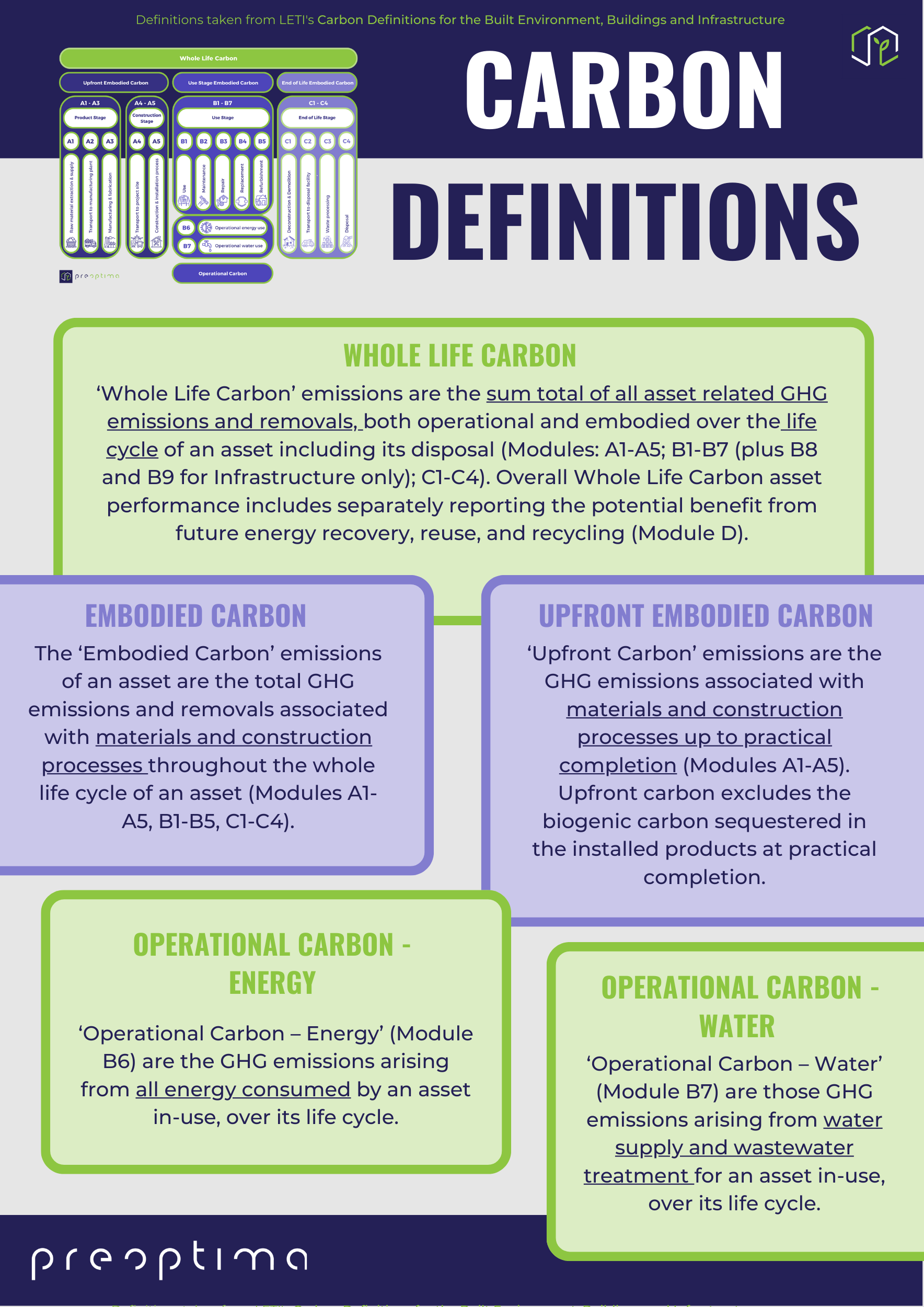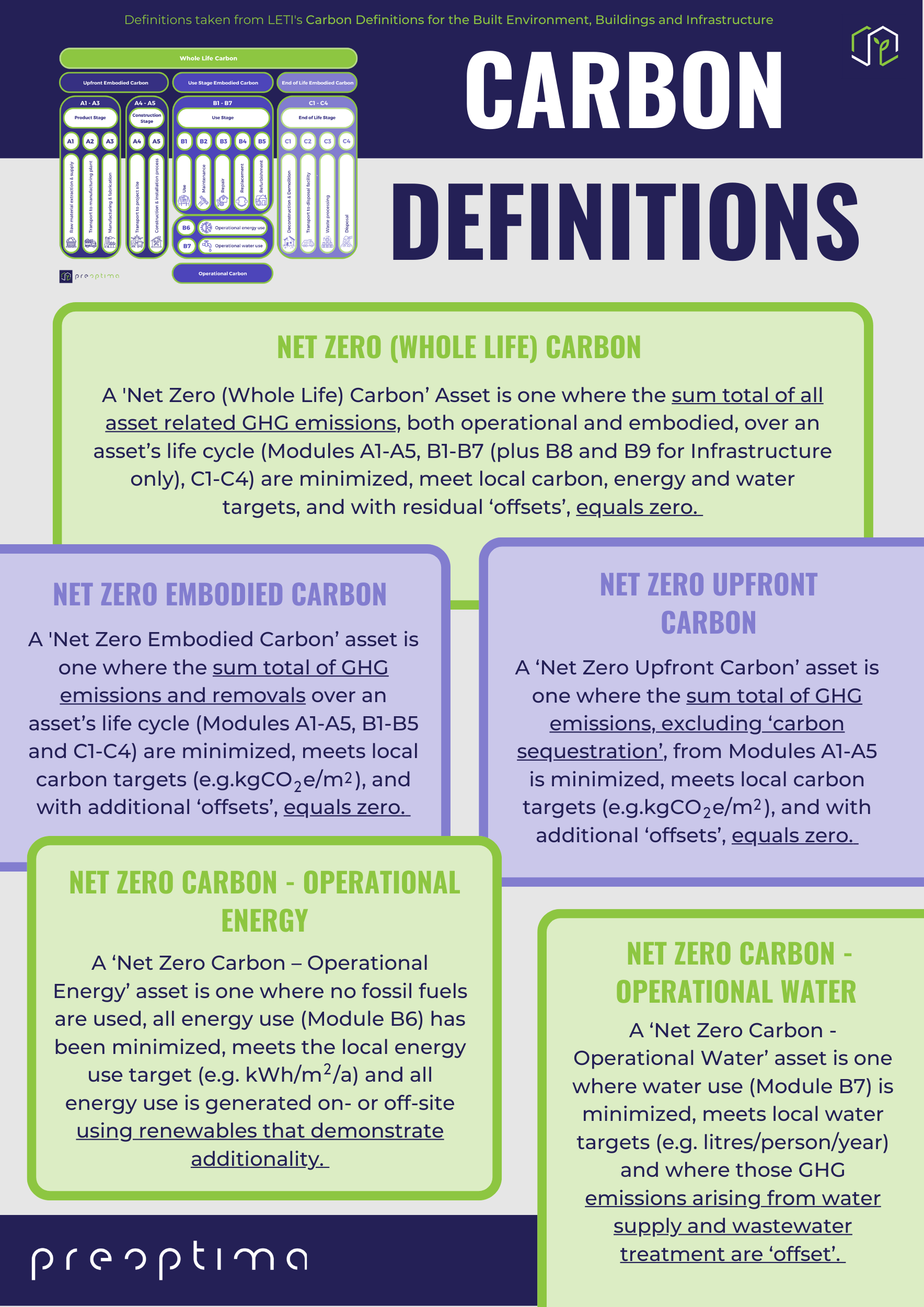Covering Embodied Carbon Series
Defining Carbon - what do the 'buzzwords' actually mean?
Read Time 7 mins | Written by: Alex Bantock
Skip to definitions infographic
The pressure of climate change is mounting and the world is responding - with the number of countries, cities, businesses and other organisations making ‘net zero by 2050’ commitments now reaching a critical mass1.
But why is everyone jumping on the net zero bandwagon? Well, it’s all in the science, with the International Panel on Climate Change (IPCC)2 showing that the Earth is already 1.1oC hotter than it was in the late 1800s and that to keep the potentially catastrophic effects of global warming and climate change at bay, we need to stay below a 1.5oC temperature increase. The global Paris Agreement3, born from the UN Climate Change Conference (COP21) in Paris 2015, aims to do just this with the overarching goal to reduce global emissions by 45% by 2030 and reach net zero by 2050. Some of the world’s highest emitters, such as he United States of America and the European Union have pledged to achieve these goals. United Nations Net Zero Climate Action Animation
United Nations Net Zero Climate Action Animation
So, as these commitments and targets begin to snowball, it is important to stop and think: “what do these targets even mean?” and for us in the industry “what is the built environment’s role in the transition?”.
The built environment accounts for 37% of global emissions and with an estimated floor area growth of 75% between now and 20504, the built environment’s responsibility in mitigating global warming is becoming ever more important. The built environment, therefore, has to decarbonise its assets (buildings and infrastructure) - and quickly.
Although we have been seeing great action from across the industry, we seem to already be stumbling at the first hurdle, with widespread uncertainty and inconsistency in the use of basic carbon and net zero carbon terminologies5. The varying terminologies often used to define carbon emissions create confusion amongst stakeholders and with the challenge we face being great enough, there is an urgent need to streamline basic definitions first and foremost before unsuitable targets are entrenched and misdirected actions jeopardise our progress.
Thankfully, organisations here in the UK prominent are making the case for consistency evident and a family of definitions has been put together by a working group within the Whole Life Carbon Network (WLCN, a group of some 90 built environment professionals) and including detailed discussions between WLCN, LETI, CIBSE, RIBA, RICS, IStructE, ICE, and UKGBC. The ‘Definitions’ are structured around CEN TC 350 life cycle modules, (e.g. BS EN 15978:2011 for buildings, BS EN 17472: 2022, PAS 2080:2016 for Infrastructure, BS EN 15643 2021)5. The full set of definitions can be found in the Carbon Definitions for the Built Environment, Buildings and Infrastructure document, but we have collated a few definitions of 'buzzwords' most frequently used (and perhaps the most often misinterpreted) with respect to net zero buildings.


Whilst these definitions can be used globally, it is unfortunate that similar documents are not readily available and distributed elsewhere - especially in high-emitting countries. Other global sources of definitions include:
Science Based Targets Net-Zero Jargon Buster - a guide to common termsISO Standards IWA 42:2022(en) Net zero guidelines - Section 3
UNFCCC Glossary
IPCC Glossary
Interestingly, definitions of whole-life carbon (WLC) are not included in any of these lists, despite these organisations being some of the leaders in the transition. This shows that built environment stakeholders should push for the inclusion of WLC and that the ubiquitous use of basic definitions is arguably just a drop in the ocean of issues to tackle if we are to reach net zero by 2050. But again, many of the limitations net zero presents are due to a lack of global consistency and standardisation6,7.
The more the world and its largest emitting countries and organisations band together and recognise the need for consistency, the clearer our convoluted path to net zero will become.
References:
1. UN For a livable climate: Net-zero commitments must be backed by credible actionUNFCCC Glossary
IPCC Glossary
We'd love to hear from you!

